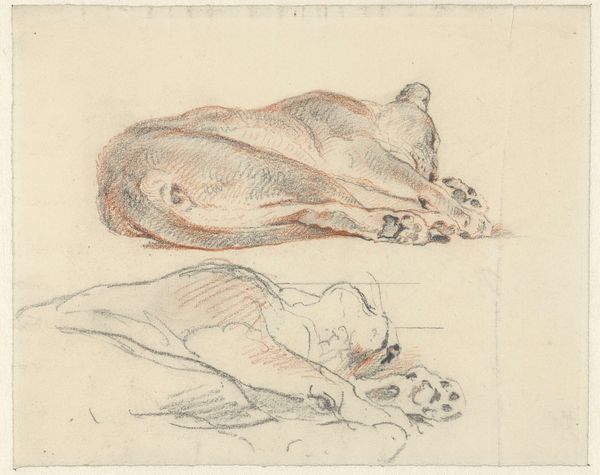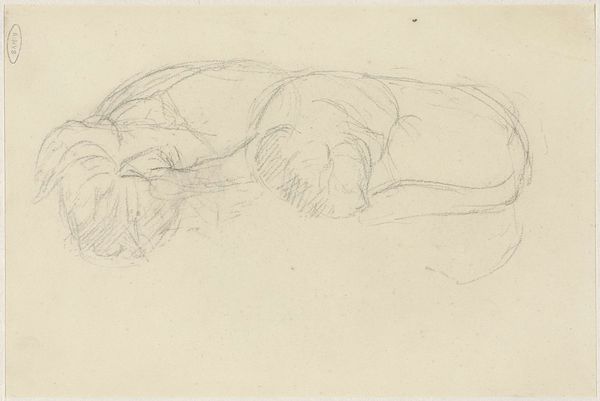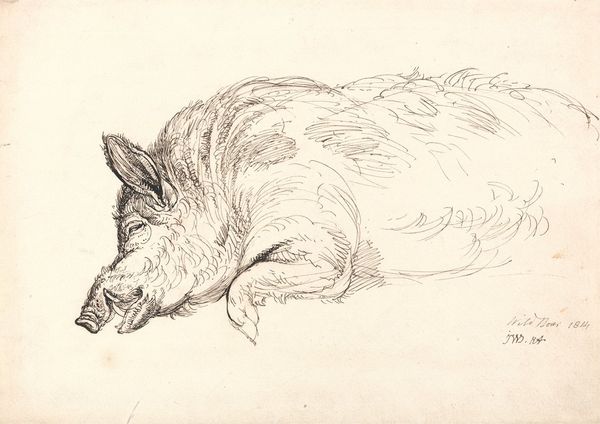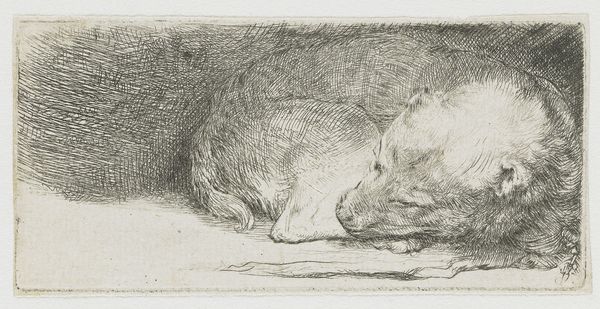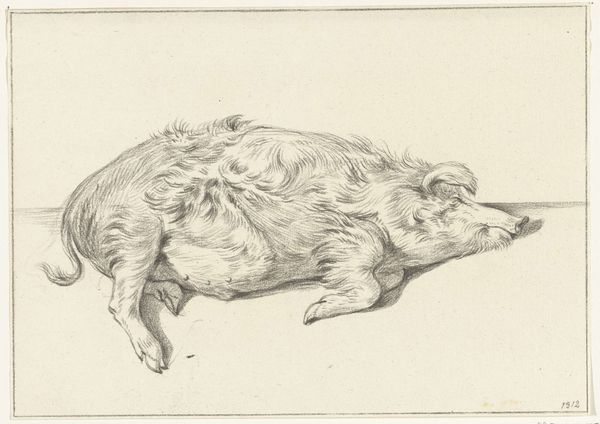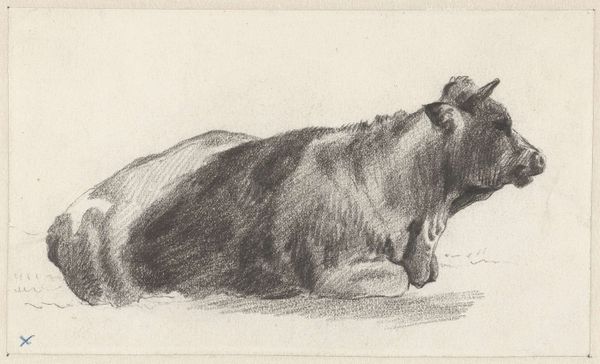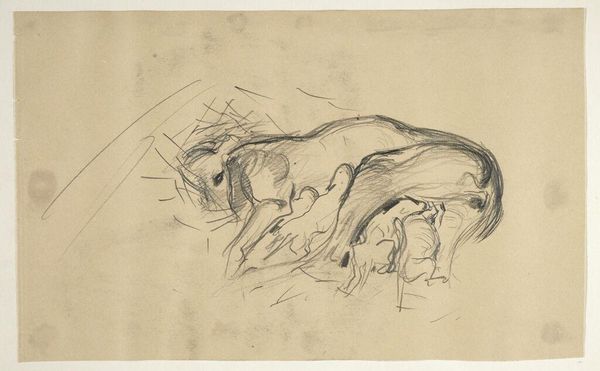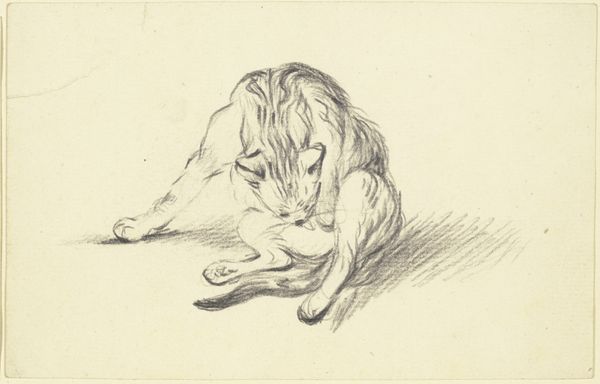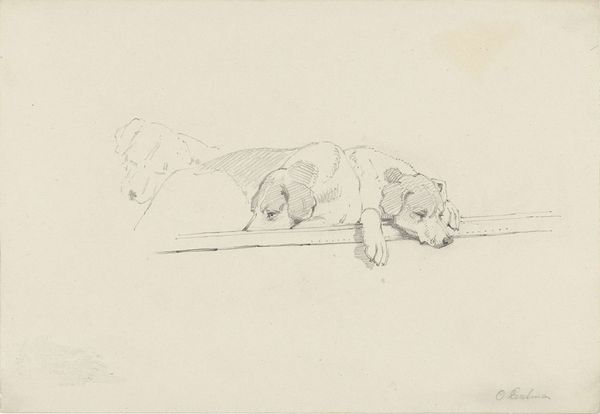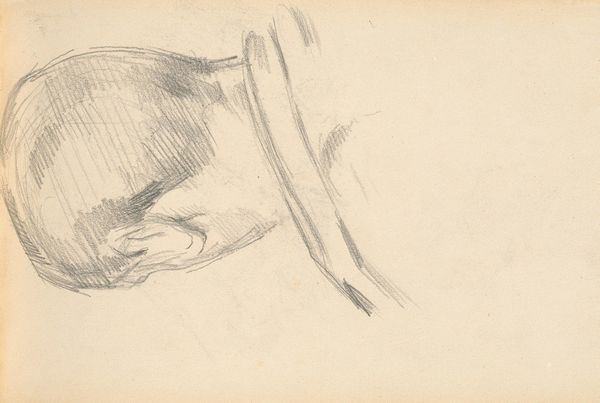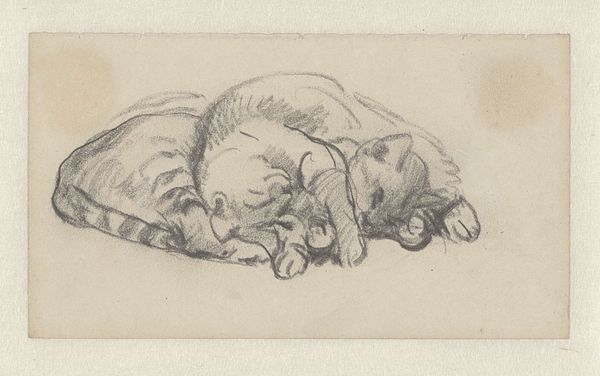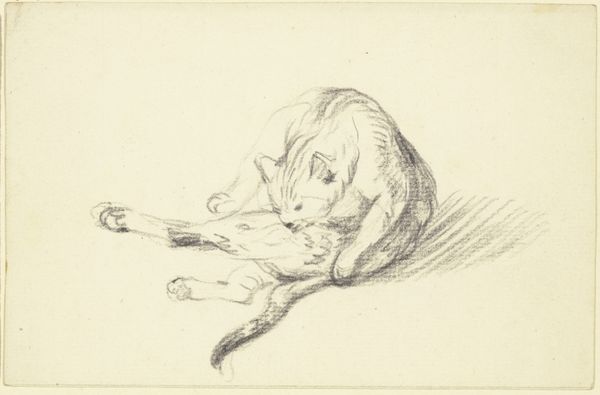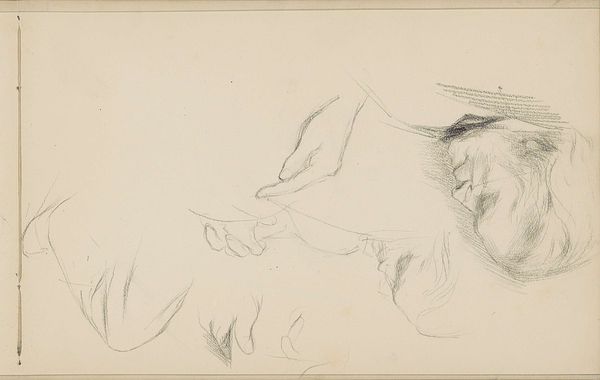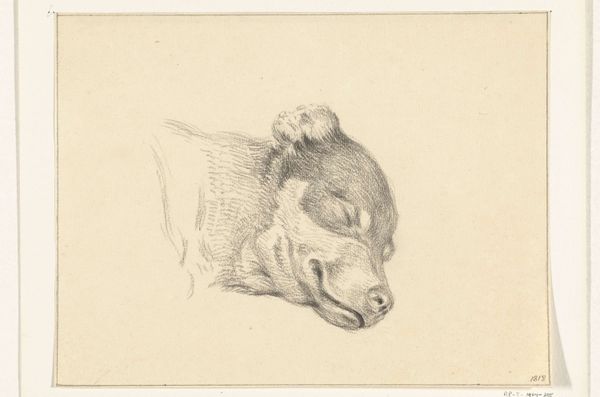
drawing, paper, pencil
#
portrait
#
pencil drawn
#
drawing
#
pencil sketch
#
dog
#
paper
#
pencil drawing
#
pencil
#
pencil work
#
realism
Dimensions: height 95 mm, width 158 mm
Copyright: Rijks Museum: Open Domain
Editor: Here we have "Slapend hondje," or "Sleeping Dog," a pencil drawing on paper by Guillaume Anne van der Brugghen, dating somewhere between 1821 and 1891. It’s a tender little sketch, so intimate. What does this drawing evoke for you? Curator: What strikes me is the public's fascination with domestic animals during this period. Think of Landseer's sentimental dog paintings, hugely popular through prints. Van der Brugghen offers a more informal glimpse, but it's still part of this larger cultural trend that saw animals, especially dogs, becoming integrated into bourgeois family life. This wasn't just about companionship; it was a reflection of changing social values, with increased emphasis on sentimentality and domesticity. How do you think a simple sketch like this played into those dynamics? Editor: It makes me wonder, was it common for artists of the time to create so many sketches of them? Were these preliminary studies, or valued works in their own right? Curator: Often both! Quick sketches captured fleeting moments – a dog asleep, children at play – offering artists source material for larger compositions. But they also gained appreciation as authentic expressions of the artist’s hand and vision. The rise of art collecting among the middle class also helped elevate these more intimate works. Did van der Brugghen exhibit widely? It'd be interesting to see where this piece fits within his wider oeuvre. Editor: I see your point, it speaks volumes about the society that treasured images like these. It’s fascinating how much history can be embedded even in what appears to be a simple, charming sketch. Curator: Precisely! Examining even seemingly small works like this helps us uncover broader cultural values and shifting social dynamics.
Comments
No comments
Be the first to comment and join the conversation on the ultimate creative platform.
